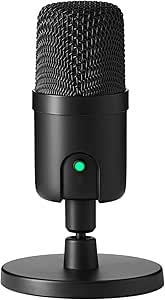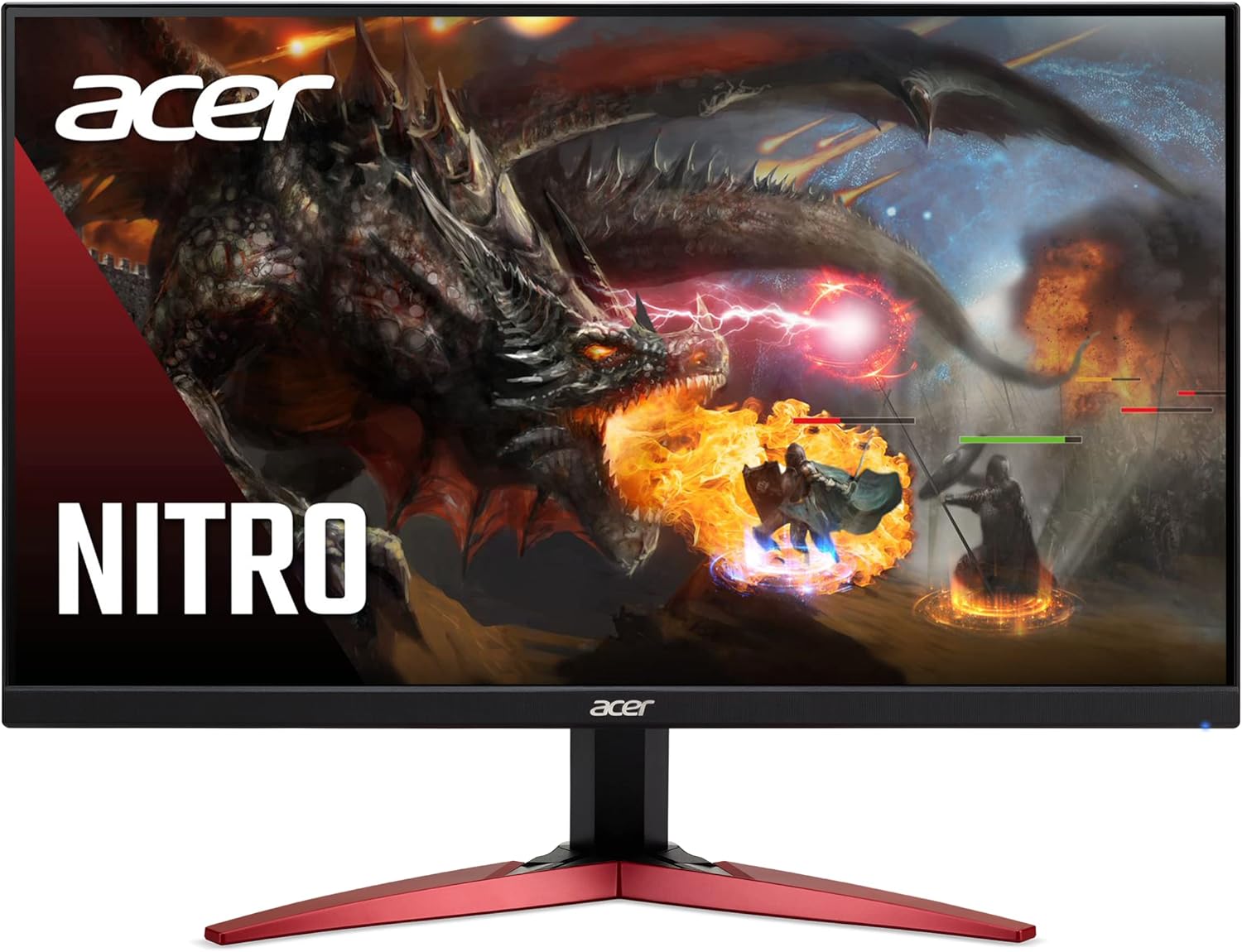CELL PHONES
How Cell Phones Affect Communication Skills

Positive Effects of Cell Phones on Communication Skills
How Cell Phones Affect Communication Skills۔ In today’s world, cell phones are a part of almost every aspect of our lives. We use them for work, socializing, and staying connected with others. But, as much as cell phones help us communicate, there is growing concern over how they might affect our communication skills.
This article explores both the positive and negative impacts of cell phones on how we interact with others.
1. Instant Connectivity: Staying in Touch Anytime, Anywhere
One of the most significant advantages of cell phones is their ability to keep us connected instantly. That means we can reach out to them within merely a few moments of letting others know our intentions whether it be through calling, texting, or social media. With this instant connection, we remain close to friends, family, and coworkers even when miles away from them. Such a system is especially helpful to people with long-distance relationships or those who often travel.
2. Enhanced Written Communication: Texting and Messaging Made Easy
Cell phones have changed the way we write. With texting, messaging apps, and social media, writing to others has become quicker and easier. As soon as many people grew comfortable with discussing things through text, they actually began using shorthand forms and emojis to sort of express their feelings. This has helped us write better—especially when it comes to sending messages clearly and briefly.
3. Access to Information: Enriching Conversations
Cell phones give us easy access to a world of information. Whether you’re looking up a quick fact or sharing the latest news, the ability to look up information instantly enriches conversations. This makes it easier to stay informed and engage in meaningful, data-driven discussions, improving the overall quality of communication.
Negative Effects of Cell Phones on Communication Skills
1. Decline in Face-to-Face Interactions
One significant disadvantage of cell phones is that it reduce face-to-face conversations. The more that people prefer talking by texting or social media, the less they interact with people in person. Talking to a person helps us learn other important social skills, such as reading body language, maintaining eye contact, and trying to understand one’s feelings. Without these, they may have a tough time connecting with others in a much deeper aspect.
2. Reduced Attention Span: Multitasking During Conversations
Cell phones often distract us during conversations. People frequently check their phones during meetings, social gatherings, or even while talking to friends and family. These distractions may lead to misunderstandings and less meaningful conversations. It reduces the quality of our communication because we are not able to give full attention to the conversation.
3. Impaired Social Skills: Difficulty with Verbal Interactions
Heavy reliance on text messages or online communication can reduce our comfort with verbal communication. People may feel more anxious when they have to speak face-to-face because they aren’t used to using their voice as much. Skills like public speaking or even casual conversation can become harder if texting and messaging are the primary means of communication.
4. Misinterpretation of Tone: The Limits of Text-Based Communication
Another common issue with cell phone communication is the potential for misinterpreting tone, especially in texts. Without voice tone or facial expressions, it’s simple to misunderstand what someone means in a message. This causes confusion or even arguments. When we talk in person, we can see emotions and change how we respond, which is much tougher when communicating digitally.
The Influence of Social Media on Communication Skills
1. Shifting Communication Styles
Social media platforms like Facebook, Instagram, and Twitter have transformed how we communicate. While these platforms are convenient for sharing thoughts and staying updated, they encourage brief and sometimes shallow exchanges. Many people have become more accustomed to short posts and quick comments, which can undermine deeper, more meaningful conversations.
2. The Rise of Visual Communication
On social media, visuals like images, memes, and videos often take center stage. While this has made communication more engaging, it also shifts focus from written or verbal communication to images. Relying on visual content may reduce opportunities to practice verbal skills and lead to less meaningful interactions that focus more on what people see than what they say.
Balancing Cell Phone Use for Better Communication
1. Making Time for In-Person Conversations
Cell phones are useful but talking to people in person is the way to go as face-to-face meeting forms a deeper and stronger relationship. Whether it is a casual coffee with a friend or business talk, proper speech and understanding are achieved only through talking in person.
2. Minimizing Distractions During Conversations
When talking to someone, it’s important to give them your full attention. Cell phones are often a source of distraction—whether it’s checking notifications or scrolling through social media. Putting the phone away during conversations can help you stay focused, improve active listening, and create more engaging, thoughtful exchanges.
3. Empathy and Active Listening: Key to Effective Communication
Talking by text, phone call, or face-to-face conversation requires empathy and active listening. The act of taking your time to understand the other person well and replying thoughtfully conveys a sense of care for how they feel. Therefore, teaching such skills will ensure good communication during both online and in-person talks.
Conclusion: Finding the Right Balance Between Technology and Personal Interaction
Cell phones have altered the way we communicate with each other; it is easier to be in touch and to share information. At the same time, excessive usage of cell phones for texting and social media can lead to an injury of our capacity to talk to people face-to-face, concentrate, and connect meaningfully with others. To achieve good communication skills, balance is called for: while using cell phones for convenience, also making time for meetings in person. By doing this, we can make sure that technology helps rather than hurts our ability to communicate well.
Frequently Asked Questions (FAQs) about How Cell Phones Affect Communication Skills
1. How do cell phones improve communication skills?
Cell phones improve communication by interconnecting people in an instant. People can communicate with one another easily either through text messages, voice calls, or social media. Further, cell phones enhance our writing skills since texting and messaging make us send clear and brief messages. They easily give us access to information so that conversations are more informed and based on facts.
2. What are the negative effects of cell phones on communication skills?
Some of the bad effects include less face-to-face communication because people prefer texting or using social media more than talking face-to-face. This may cause damage to social skills, like comprehending body language as well as eye contact. Cell phones make people multitask, thereby shortening attention spans during talks, making less importance attached to them.
3. How do cell phones affect face-to-face communication?
Cell phones tend to make people talk less to other people, as many will instead text or message. In turn, they lose very useful skills regarding components of non-verbal communication, such as body language, tone of voice, and even facial expressions. Due to this, relationships may get worse due to a lack of personal connection.
4. Can cell phones negatively affect our social skills?
Yes, over-reliance on text-based communication can reduce our confidence in verbal interactions. People may become less comfortable speaking in person or social settings, as they’re more accustomed to typing messages than engaging in face-to-face conversations. This can affect both casual chats and more formal communication like public speaking.
5. What is the impact of social media on communication?
Social media promotes shorter, often more superficial communication. While it allows for quick interactions, it can limit the depth of conversations. Additionally, the focus on visuals over words may reduce opportunities to practice written or verbal communication skills, making conversations less meaningful.

CELL PHONES
Best Budget Smartphones 2025: Top Affordable Picks for Everyday Use
Discover the Best Budget Smartphones 2025, featuring high-quality cameras, long battery life, and impressive performance—all at an affordable price.

In 2025, A smartphone is more than just a tool for sending and receiving texts or making and receiving calls. They are our cameras, our entertainment systems, our productivity tools, and our constant companions. However, it’s not necessary to pay a lot of money to have the best smartphone. Over the past few years, the market for low-cost smartphones has grown significantly, providing amazing features at nearly nothing in comparison to flagship models.
This comprehensive guide delves deeply into the top budget smartphones of 2025, examining their unique features, practical uses, and how to pick the best one for your requirements.
Introduction: Budget Smartphones for the Modern User
Problem:
Have you ever had trouble finding a dependable smartphone that fits your budget? Many people believe that in order to buy an inexpensive gadget, they must make compromises in terms of performance, camera, or design. Not to mention all the technical jargon, the options are unlimited. There’s just too much to process.
Agitation:
Have you ever found it hard to get a reliable smartphone with the right budget? Many think they need to compromise on performance, camera, or design when trying to get an affordable device. Choices are endless, not to mention all the technical jargon. It’s just so much to take in.
Solution:
The good news is that a brand-new line of low-cost smartphones with capabilities that give them a high-end appearance will be available by 2025. These can perfectly meet your needs by providing performance at a reasonable cost and being fashionablely made so you can use high-end technology without going over budget. We should now examine the best choices and how to choose one that meets your needs.
Why Budget Smartphones Shine in 2025
The days of cheap smartphones being equated with sacrificing quality are long gone. These days, they offer performance and features that were previously only seen in high-end devices, which makes them an intelligent option for astute consumers.
1. Affordable Quality
These days, low-cost phones can have lengthy battery life, multi-lens cameras, and high-resolution screens for a fraction of the price of flagship models.
2. Versatility for Everyday Use
These smartphones manage the majority of tasks with ease, from gaming and photography to fluid browsing.
3. Better Longevity
Budget smartphones are made to last and offer value over time because of better build quality and software updates.
Anecdote: Consider Sarah, a student of graphic design, who required a phone with dependable performance and a sharp display for her projects. She discovered a low-cost smartphone that satisfied her requirements without breaking the bank, demonstrating that remarkable capability doesn’t require a premium gadget.
What to Look for in a Budget Smartphone
Take into account these essential qualities when selecting the best low-cost smartphone:
1. Display Quality
Make sure the resolution is at least Full HD+. For smoother scrolling, a higher refresh rate (90Hz or 120Hz) is advantageous.
2. Camera Setup
To take a range of pictures, choose a phone with several lenses, including a macro or wide-angle camera.
3. Battery Life
For all-day use, get a phone with a battery that has at least 4000mAh.
4. Processor and RAM
For seamless multitasking, make sure the phone has a competent processor (such as the MediaTek Dimensity or Snapdragon 695) and at least 4GB of RAM.
5. Software Updates
Over time, devices that receive regular upgrades typically function better and remain secure.
Top Budget Smartphones of 2025
1. Samsung Galaxy A15
Why It’s Amazing:
The Samsung Galaxy A15 is a favorite among consumers on a tight budget since it blends upscale design with reliable performance.
Features:
- Bright colors are shown on a 6.5-inch AMOLED screen.
- Exynos 1280 processor for seamless multitasking.
- Three cameras with a 50MP primary sensor are used.
- Fast-charging 5000mAh battery.
Best For: Students, professionals, and casual users who value reliability.
2. Moto G Power 2025
Why It’s Amazing:
The Moto G Power lives up to its name with extraordinary battery life and a user-friendly design.
Features:
- 6.6-inch Full HD+ display.
- Processor: Snapdragon 680 from Qualcomm.
- Cameras: 64MP primary camera to capture clear images.
- 6000mAh battery that lasts for up to three days.
Anecdote: Delivery driver Emily discovered that the Moto G Power was ideal for her lengthy hours and that she never needed a midday charge.
3. Google Pixel 6a
Why It’s Amazing:
The Google Pixel 6a introduces Google’s clean Android experience and flagship-caliber cameras to the low-cost market.
Features:
- 6.1-inch OLED display.
- Processor: Google Tensor with performance enhanced by AI.
- Cameras: 12MP ultra-wide with sophisticated software and 12.2MP primary.
- Software: Longevity is guaranteed by five years of upgrades.
Best For: Android purists and photography enthusiasts looking for a seamless, user-friendly experience.
4. OnePlus Nord CE 3 Lite
Why It’s Amazing:
The Nord CE 3 Lite delivers powerful gaming and multitasking capabilities, wrapped in a sleek, stylish design.
Features:
- Display: 6.72-inch, refresh rate: 120 Hz.
- Processor: Snapdragon 695 by Qualcomm.
- Cameras: main 108MP camera for close-ups.
- Battery: Minimal downtime is guaranteed with 67W rapid charging.
Best For: Gamers and power users on a budget.
5. TCL 30 V 5G
Why It’s Amazing:
The TCL 30 V 5G is a great option for those who enjoy streaming and browsing because it offers 5G speed at an inexpensive price.
Features:
- 6.67-inch Full HD+ screen with NXTVISION.
- Processor: Snapdragon 480, capable of 5G.
- Cameras: triple-camera system driven by AI.
- 4500mAh battery for dependable operation.
Best For: Users looking for fast internet speeds at a great price.
How to Choose the Right Budget Smartphone
Selecting the ideal phone doesn’t have to be difficult. To make the process simpler, take these actions:
Step 1: Set Your Budget
Considering that the majority of low-cost cell phones fall between $200 and $500, decide how much you are ready to spend.
Step 2: Identify Your Needs
Are you an avid photographer, gamer, or casual user? Depending on your demands, rank aspects like display, performance, and camera quality.
Step 3: Research and Compare
To determine which of the phones on your shortlist delivers the most value for your money, compare their features and reviews.
Step 4: Consider Software Updates
Choose gadgets that guarantee frequent upgrades for enhanced functionality and security.
Step 5: Test the Device
To evaluate the phone’s construction, display, and responsiveness, try to visit a store whenever you can.
Emerging Trends in Budget Smartphones
By 2025, low-cost smartphones will be catching up to premium models. What’s new is this:
1. 5G Connectivity
5G is now widely supported by low-cost phones, providing quicker download speeds and more seamless streaming.
2. AI Integration
Voice assistants and cameras with AI capabilities are becoming commonplace.
3. High Refresh Rates
Even in low-cost devices, anticipate 90Hz or 120Hz screens for fluid scrolling and gaming.
4. Sustainable Materials
Eco-friendly materials are being used in the designs of several manufacturers.
FAQs About Budget Smartphones
1. Are budget smartphones reliable?
Yes, Thanks to technological improvements, low-cost cell phones today provide excellent performance, dependability, and durability.
2. Can I use a budget phone for gaming?
Absolutely! A lot of low-cost phones come with powerful CPUs and GPUs for fluid gaming.
3. Do budget smartphones have good cameras?
Yes, Several lenses with AI improvements guarantee that you can take excellent pictures and films.
4. How long do budget smartphones last?
Budget smartphones can last two to three years or more if they receive regular upgrades and adequate maintenance.
Conclusion: Affordable Excellence for Everyone
The best budget smartphones of 2025 prove that you don’t need to spend a fortune to enjoy premium features. From the camera-focused Google Pixel 6a to the battery powerhouse Moto G Power, there’s something for every user.
Spend some time considering your options, determining your needs, and creating a budget. Your everyday life can be improved with the appropriate smartphone, which offers amazing value without breaking the bank. Invest in a phone that is as dedicated to its work as you are in 2025!
CELL PHONES
Smartphones, Social Media and Their Impact on Mental Health
Smartphones and social media have transformed modern life, becoming essential tools for staying connected, informed, and entertained. But as much as they enhance our lives, they also come with hidden costs that many of us, including myself, have experienced.

Smartphones and social media have transformed modern life, becoming essential tools for staying connected, informed, and entertained. But as much as they enhance our lives, they also come with hidden costs that many of us, including myself, have experienced. Have you ever caught yourself scrolling endlessly, feeling drained yet unable to stop? It’s a feeling I know all too well, and it raises an important question: are these tools helping or harming our mental health?
This article dives deep into the dual impact of smartphones and social media, exploring how they shape our mental well-being both positively and negatively. In this article, you will get practical and specific action strategies that are endorsed by actual experience and academic research. Whether you need to renew the light moments of technology or bring to attention its mental cost, this complete guide is meant for use.
Why Smartphones and Social Media Are So Addictive
If you’ve ever caught yourself endlessly scrolling through social media feeds, you’re not alone. I’ve been there, too—lost in a cycle of refreshing my feed, chasing that dopamine hit from likes and comments. This isn’t by accident. Social media platforms are designed to keep us engaged for as long as possible.
The Science Behind the Addiction
Every notification, like, or comment triggers a release of dopamine, the brain’s “feel-good” chemical. This creates a reward loop that makes us crave more. Over time, this can become compulsive, leading to excessive use that interferes with daily life.
My Personal Experience
I remember days when I spent hours on my phone, only to feel drained and unproductive afterward. It felt like I was chasing a sense of connection and validation that rarely left me feeling fulfilled.
The Positive Side of Smartphones and Social Media
While there’s plenty of criticism about these technologies, I believe they offer significant benefits when used thoughtfully. Here are a few ways they’ve positively impacted my mental health:
1. Staying Connected
Keeping in touch with friends and family, especially those who live far away, has never been easier thanks to social media; video calls, direct messages, and shared posts foster a sense of intimacy that I greatly cherish.
2. Learning Opportunities
Whether it’s a new recipe, a fitness routine, or mindfulness tips, I’ve learned so much from the content shared on social platforms. Apps like Duolingo or TED have made education more accessible than ever.
3. Building Communities
Actually, I have been connected to some people via social media- from support groups for mental health issues to forums focusing on some activities. These virtual communities are often the members’ encouragement and solidarity during the worst part of their lives.
The Hidden Costs: Negative Impacts on Mental Health
For all the good, smartphones and social media can take a toll on our mental health. Here’s what I’ve noticed in my own life:
1. Increased Anxiety and Stress
The never-ending stream of information can sometimes be too much to handle. I can get tense from social media updates, news notifications, and even the need to reply to messages. This constant connectedness eventually causes mental exhaustion.
2. The Comparison Trap
Scrolling through perfectly curated photos and posts can sometimes make me feel like my life doesn’t measure up. This feeling of inadequacy, fueled by social media, has been linked to depression and low self-esteem.
3. Disrupted Sleep Patterns
Using my phone late at night, especially scrolling through social media, often delays my sleep. The blue light emitted by screens can interfere with melatonin production, making it harder to fall asleep and stay asleep.
4. Reduced Attention Span
I’ve noticed that multitasking between apps and notifications has affected my ability to focus. Simple tasks now require more effort because my brain has grown accustomed to constant stimulation.
Signs That Smartphones and Social Media May Be Harming Your Mental Health
If you’re wondering whether your phone habits are negatively affecting your mental health, here are a few signs to watch for:
- experiencing tension or anxiety when you don’t have your phone.
- browsing for hours on end, even when it gets in the way of other things.
- feeling inferior and comparing oneself to others.
- Having trouble concentrating on things without looking at your phone.
- having trouble sleeping as a result of using a phone late at night.
I’ve experienced most of these at some point, which pushed me to reevaluate my relationship with technology.
How to Use Smartphones and Social Media Mindfully
Over the years, I’ve discovered strategies to balance the benefits of these tools with the need to protect my mental health. Here’s what works for me:
1. Set Time Limits
Apps like Screen Time and Digital Wellbeing allow me to monitor and limit how much time I spend on social media. Setting daily usage caps has been a game-changer.
2. Create Phone-Free Zones
To ensure quality time with family and friends, I designate phone-free zones, such as during meals or family gatherings. This fosters real-world connections that feel more fulfilling.
3. Take Breaks
I regularly take digital detoxes, even if it’s just for a few hours. Whether it’s a walk in nature or reading a book, stepping away from screens helps me recharge.
4. Curate Content Carefully
Following accounts that inspire and educate me, while unfollowing those that evoke negativity, has improved my online experience immensely.
5. Practice Mindfulness
Mindfulness exercises, like meditation or journaling, help me stay present and aware of my emotional responses to social media.
Social Media’s Impact on Younger Generations
As a millennial, I’ve grown up alongside social media, but its effects on younger generations concern me. Teenagers, in particular, face unique challenges:
- Cyberbullying: Bullying and harassment on social media can have a long-lasting impact on one’s mental health.
- Unrealistic Expectations: Self-worth and body image can be distorted by exposure to highly curated and filtered content.
- Dependency: Many teenagers find it difficult to detach, which results in fewer in-person connections and a lack of practical skills.
Parents and educators play a crucial role in guiding young people toward healthy habits.
What Can We Do as a Society?
The issue of smartphones and social media extends beyond individual habits. As a society, we need to foster awareness and create systems that promote healthier relationships with technology.
Encourage Digital Literacy
Teaching people how to critically evaluate online content and manage their screen time is essential.
Promote Regulation
Platforms must be held accountable for the mental health consequences of their designs, such as algorithms that prioritize addictive content.
Advocate for Mental Health Resources
Accessible mental health support should be a priority, especially for those affected by online toxicity or overuse.
Conclusion: Striking a Balance
There have been many highs and lows in my experience with smartphones and social media. They have given me chances and connections I never would have thought possible, but they have also put my mental health in jeopardy. I’ve discovered a better balance by establishing limits, taking breaks, and intentionally using these skills.
These technologies ultimately become what we make of them. Let’s put them to work for ourselves in growth, learning, and connection instead of letting them dominate our lives. The choice is ours on how best to shape our digital habits, demanding that our mental well-being will remain in good shape.
FAQs: Smartphones, Social Media, and Mental Health
1. How do smartphones affect mental health?
Mental health can be impacted by smartphones in both positive and negative ways. Overuse of them can result in anxiety, depression, sleep disorders, and short attention spans, even while they offer connectivity and resource access.
2. What are the benefits of social media for mental health?
The benefits of social media include preserving relationships with others, connecting with support systems, and locating learning materials. It can provide people with a sense of community and give them a place to express themselves.
3. How can I tell if social media is harming my mental health?
Signs include having trouble focusing on work, spending too much time online, comparing yourself to others, feeling anxious when you don’t have your phone with you, and having trouble sleeping.
4. What strategies can help balance smartphone and social media use?
Set time limits, create phone-free zones, take digital detoxes, curate content carefully, and practice mindfulness to foster a healthier relationship with technology.
5. Can taking a break from social media improve mental health?
Yes, Even for brief periods of time, putting social media aside can boost focus and in-person relationships while lowering stress and enhancing sleep.
6. How does social media affect teenagers differently?
Teenagers are particularly vulnerable to cyberbullying, unrealistic expectations, and dependency on social media, which can significantly affect their self-esteem and mental well-being.
7. Are there apps that can help manage smartphone usage?
Yes, applications that track and restrict phone use include Screen Time (iOS), Digital Wellbeing (Android), and third-party applications like Moment and Forest.
8. What role does society play in addressing these challenges?
To lessen the detrimental effects of smartphone and social media use, society may support mental health resources, encourage digital literacy, and hold platforms responsible for moral behavior.
CELL PHONES
What Is Cell Phone Elbow? Symptoms and Treatment

What Is Cell Phone Elbow? In today’s digital world, we spend hours on our phones. Whether texting, scrolling through social media, or making calls, our hands and arms take on more strain than we realize.
Do you feel tingling or numbness in your fingers after using your phone for a long time? You might have a cell phone elbow. This condition, called cubital tunnel syndrome, is becoming more common as we rely on phones for work and fun.
Let’s explore cell phone elbow symptoms and how to treat them.
What Is Cell Phone Elbow?
This condition of cell phone elbow happens when you keep your arm bent for a long time, such as while holding a phone for calls. This creates pressure on the ulnar nerve found at the inner part of your elbow, causing it to gradually lead to pain, numbness, or even weakness in your hand.
The condition is similar to “tennis elbow,” except instead of a muscle sprain, it is caused by nerve compression.
The ulnar nerve is responsible for sensations in your pinky and ring fingers. When it’s compressed, you might feel:
- Numbness or tingling in your fingers.
- Pain in your elbow or forearm.
- Weakness in your hand grip.
These symptoms are most noticeable after long phone calls or hours of holding your phone in the same position.
What Are the Symptoms of Cell Phone Elbow?
Knowing the symptoms can help you catch the condition early. Here’s what to watch for:
- Numbness or Tingling in Fingers
The ulnar nerve affects the pinky and ring fingers. If you feel tingling or “pins and needles” in these fingers, it’s a sign of compression. - Pain in the Elbow or Forearm
You might feel a sharp or dull ache in your elbow, especially after holding your phone for too long. - Weak Hand Grip
Some people see they can’t hold things as tightly as they could before. This happens because the nerves control how the hand moves.
- Sharp Pain On Movement Of Arm
The elbow can be bent or straightened, which causes sharp pain from the elbow to your hand.
If these symptoms persist, acting quickly to prevent long-term damage is essential.
What Causes Cell Phone Elbow?
The main causes include:
- Holding Your Phone in One Hand for a Long Time: Holding your arm bent hurts the nerve.
- Repetitive Movement of the Arms: Texting, scrolling, or video chatting strains the elbow.
- Poor Posture: Slouching when using your phone puts more strain on your arms and shoulders.
These habits create a perfect storm for nerve compression.
Symptoms to Watch Out For
If you’re dealing with cell phone elbow, you might notice:
- Tingling or numbness in your pinky and ring fingers.
- A sharp pain or a dull ache in your elbow.
- Difficulty gripping objects or weak hand movements.
- Pain that worsens after using your phone.
These symptoms may start as mild discomfort but can worsen if ignored.
How to Treat Cell Phone Elbow
The good news? You can treat cell phone elbow with some simple steps.
1. Take Breaks from Phone Use
Limit how long you hold your phone. Use a table or stand to prop it up instead of holding it in your hand.
2. Switch to Hands-Free Options
Using Bluetooth headsets or speakerphones keeps your arms in a relaxed position. This reduces strain on your elbows.
3. Stretch and Exercise
Gently stretch your arms and fingers to relieve tension. Try this simple stretch:
- Extend your arm straight.
- Pull your fingers back gently with the other hand.
- Hold for 10 seconds and release.
4. Use Ice or Heat
If you feel pain, applying an ice pack to your elbow for 10–15 minutes can reduce swelling. Heat pads also help relax the muscles around the nerve.
5. Wear a Splint or Brace
A brace keeps your elbow in a neutral position while you rest or sleep. This prevents further nerve irritation.
6. Physical Therapy
Therapists can teach you exercises to strengthen your arm muscles and improve nerve function.
7. Consult a Doctor
If the pain doesn’t go away, see a doctor. Severe cases might need medications, steroid injections, or surgery to relieve pressure on the ulnar nerve.
Preventing Cell Phone Elbow
Prevention is always better than cure. Follow these tips to avoid the condition altogether:
- Limit Screen Time: Use your phone only when necessary. Take regular breaks during long phone sessions.
- Change Hand Positions: Switch hands frequently or rest your phone on a surface.
- Improve Your Posture: Sit with your back straight and elbows supported.
- Invest in Ergonomic Accessories: Phone stands and adjustable desks can help keep your arms in a comfortable position.
These small changes can protect your arms and make phone use pain-free.
Why Is Cell Phone Elbow So Common?
We are utilizing more technology. Studies claim that the average person spends over 4 hours per day on their phone. Our use of our phones daily damages our hands, wrists, and elbows.
Remote work and virtual meetings have also increased our phone usage, making conditions like cell phone elbow more widespread.
Why Is This a Growing Problem?
The disease is also a reflection of excessive dependence on phones and further technology, besides actual phone usage. As per the same study in 2023, one person spends as much as 4–6 hours daily on a phone. That’s tremendous amount of work our hands have to perform constantly with that device, and arms plus our necks do. End.
This is also because of the increase in remote work and video calls around the globe. People use devices more frequently, often in awkward postures.
Tips for Long-Term Arm Health
Your arms deserve better care! Here’s how to keep them healthy:
1. Limit Screen Time
Set daily limits for non-essential phone use. Apps like “Digital Wellbeing” can help track and reduce screen time.
2. Ergonomic Accessories
Invest in phone stands or mounts. These keep your phone at eye level without straining your hands.
3. Hydration and Nutrition
Staying hydrated and eating a balanced diet can improve joint and nerve health. Include foods rich in vitamin B12 and omega-3 fatty acids.
Final Thoughts
Your cell phone elbow seems small and negligent, but it may throw your life out of balance. Of course, noticing early signs and taking action to prevent or treat them is vital.
If you experience tingling, pain, or weakness, try the treatments we discussed. Most importantly, take a break from your arms and change how you use your phone. Small changes today can stop bigger problems later.
-

 GADGETS3 months ago
GADGETS3 months agobest travel steamer 2025: Neakasa Magic 1 Vacuum Steamer Review – Worth It?
-

 AUTOMOTIVE3 months ago
AUTOMOTIVE3 months agoAmazon Basics USB Condenser Microphone Review: Affordable Quality for Streamers & Podcasters
-

 TECHNOLOGY2 months ago
TECHNOLOGY2 months agoSteam Data Breach: Revealed How to Safeguard Your Accout
-

 GADGETS4 months ago
GADGETS4 months agoBest Affordable VR Headsets in 2025: Top Picks for Budget-Friendly Immersion
-

 GADGETS6 months ago
GADGETS6 months agoHow to Connect Magic Mouse to Windows 11
-

 ARTIFICIAL INTELLIGENCE3 months ago
ARTIFICIAL INTELLIGENCE3 months ago50 Mind-Blowing ChatGPT Prompts You Wish You Knew Sooner (2025 Edition)
-

 NEWS1 month ago
NEWS1 month agoMark Zuckerberg Overtakes Jeff Bezos: A Powerful Billionaire Shift
-

 AUTOMOTIVE2 months ago
AUTOMOTIVE2 months agoAcer Nitro KG241Y Sbiip 23.8” Monitor Review: An Ultra-Smooth, High-Performance, Reliable Powerhouse for Budget Gamers

